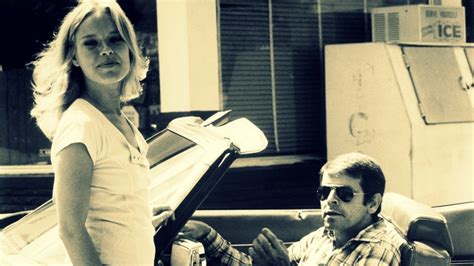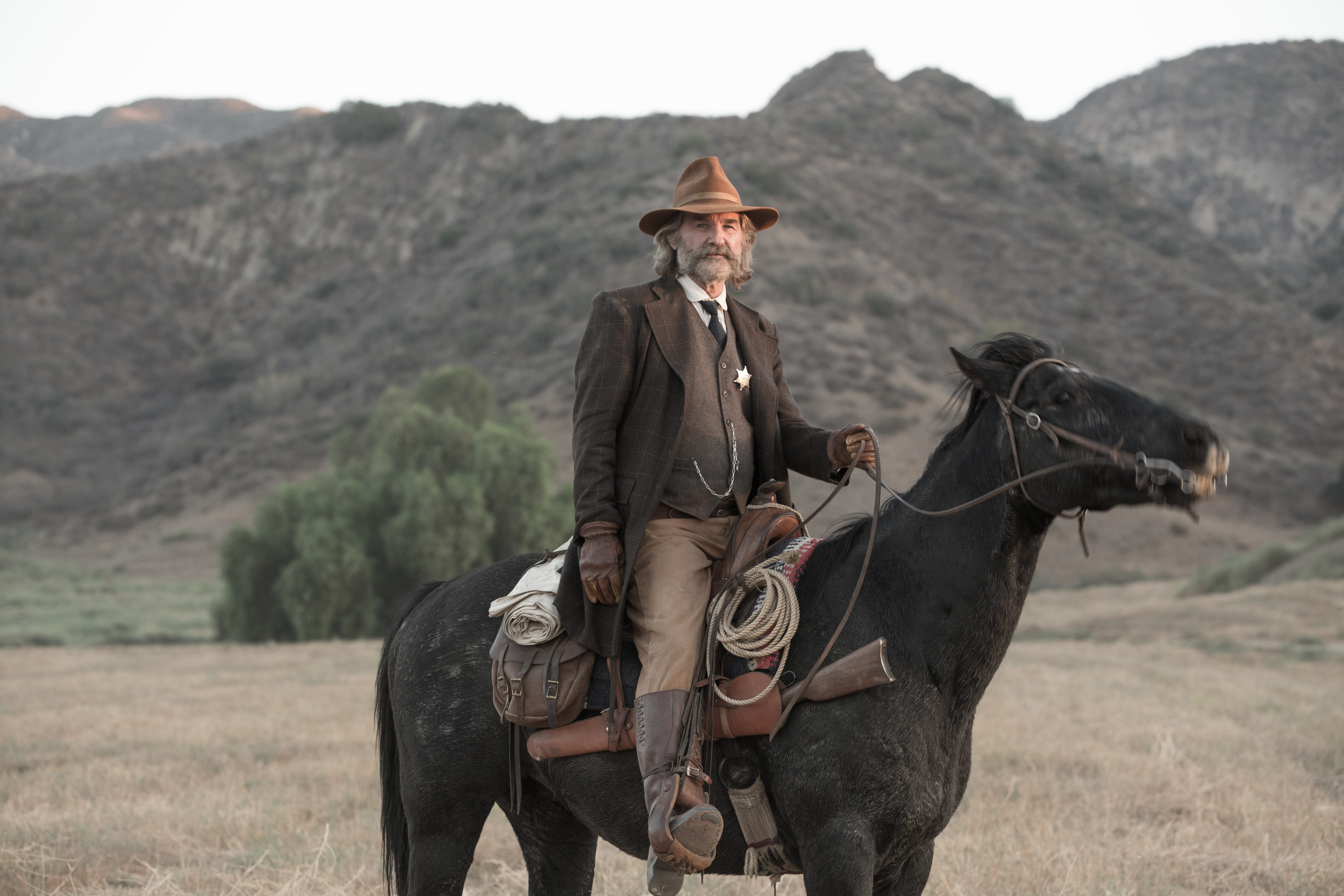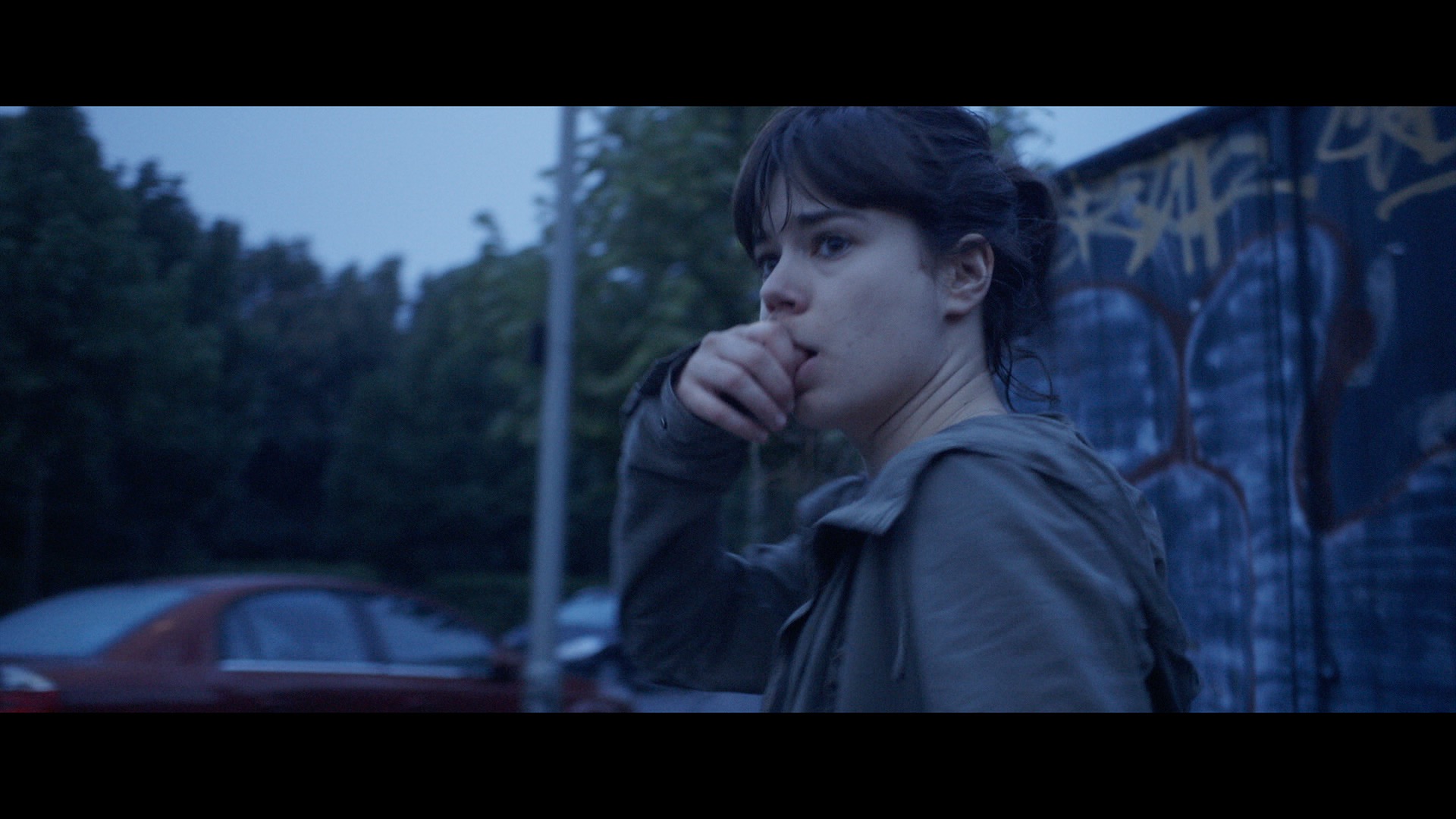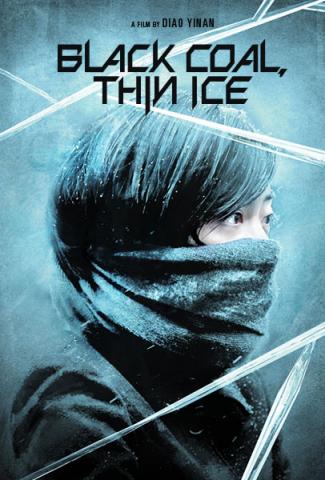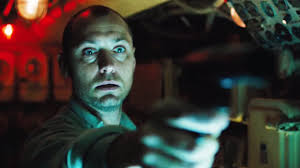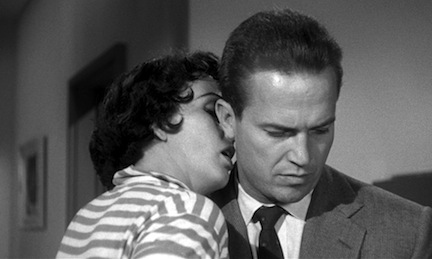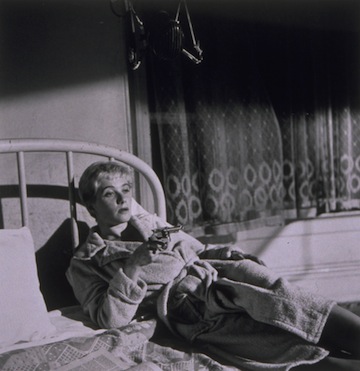The best films of the last ten years resisted the distraction or distractedness which seems to be the decade’s signature. Remarkably, directors created and audiences found films that required and rewarded concentration. Everybody knows so much now, so much of form, technique, method and intention. Film fanatics curate their own private museum of DVDs or downloads, and seeing a favorite or intriguing film five times is no big deal. As a result, we’ve become connoisseurs of fragments. We YouTube sex scenes, punch lines, iconic speeches (“Say hello to my little fren’!”), car chases, classic moments. We accept that most films don’t succeed in their entirety, but might have a moment here or there worth remembering. But moments are not drama.
Films that function as complete aesthetic and dramatic entities are rarities. Anybody who watches only the car chases in Deathproof or the seduction scenes inMulholland Drive might subsequently defend both movies without recognizing the level of their own detachment. In the light of Philip Roth and Cormac McCarthy proclaiming the death of the epic novel, and the ever-increasing brain-reduction we all suffer under the unrelenting barrage of schlockbusters (which, like, totally have their virtues!) it’s a relief to see understated, resonant, layered films find distribution and audiences. And inspiring to see films of moral, narrative or technical complexity thrive in the mainstream.
The best films of the decade revealed truth in the first viewing, and grew not only richer, but more entertaining with repeat visits. While their highlights offer plenty of kicks, if that’s what you’re after, the narrative method remains cinematic—story-telling modes that cannot be replicated in fiction or theatre, and were made to be observed in a big dark room in the company of strangers. The best films of the 2000s dealt in archetypal themes, and harkened to the community campfire that no amount of Netflix On Demand can replace.
I fucking hope.
Number 20 is a catch-all, a decade’s worth of Bruno Dumont (Twentynine Palms ’03; Flandres ’06; Hadewijch ’09) and Michael Haneke (La Pianist ’01; The Time of the Wolf ’03; Caché ’05, Funny Games {US re-make} ’07; The White Ribbon’09). Neither director can escape his signature concerns enough to make a film that escapes the constraints those concerns impose. Their excessive mannerism draws you in, but keeps you from immersing. It’s an academic standoff—admirable, but frustrating.
Dumont and Haneke strive to be so damn adult, with their furrowed brows and tortured psyches, but Number 19, Madagascar (USA—2005—Eric Darnell/Tom McGrath) revels in being juvenile. It’s just amped up enough, reliant on wit rather than gags, gave adults their portion with hidden Twilight Zone references and never turned oppressive with messages or lessons learned.
Number 18, Morvern Callar (UK - 2002—Lynne Ramsay) features a heroine determined to learn no lessons of any kind. Incarnating a new British youth, she stumbles from one sensation—one New Drug—to the next, morals-free and lucky as hell. With its air of aimlessness without longing—a shocking rejection of the key teen movie trope—and a rotting body in the living room, Movern seemed less somehow on first viewing, but its mood, its atmosphere—poisonous, recognizable and true—linger and grow in the mind.
Number 17, Spirited Away / Sen to Chihiro no kamikakush ( Japan- 2001—Hayao Miyazaki) provides (along with all of Miyazaki’s ouvre), the poetic mysteries we crave; the suggestion that all perceptible phenomena exists only as the signs and wonders of a hidden world. Miyazaki’s Michael Powell-like use of color to express emotion and the odd inevitability of his pacing, grants his animation a profundity, an emotional pull, in the form of the unspoken yearning that his young protagonists never manage to fulfill and his adult audience recognizes only too clearly.
While Miyazaki employs the most spare dialogue, director Rian Johnson joyously immerses US teenagers in the linguistic convolutions, the relentless iambic pentameter, of the hysterical period of film noir and, of course, Shakespeare (orDeadwood). In Number 16, Brick (USA- 2005) Johnson creates a singular noir milieu, comprised of lethal terror and the high-school social melee. This accurately presents the high school social melee for what it is: deadly, nuanced, ridiculous, and inescapable.
Kiyoshi Kurosawa had a productive and worthy decade (Bright Future ’03; Ghost Cop ’04; Loft ’05; Shriek ’06; Tokyo Sonata ’08) to say the least and Number 15Pulse/Kairo (Japan—2001), best showcases his gifs: quotidian locations made beautiful by Godard-like composition, an eerily matter-of-fact presentation of the greatest horror, hypnotic pacing, absolutely unexplained allegories and solution-free resolutions: endings guaranteeing that everything that has gone wrong will, in the future, only go worse.
 "Can daddy please have the heroin?" Pusher II
"Can daddy please have the heroin?" Pusher II
Number 14 Red Riding: 1974 ( UK—Julian Jarrold—2009) / 1980 (UK—James Marsh—2009) are British made for TV movies released theatrically stateside, thus raising of the question: how many films this decade were better than The Wire, Deadwood, Mad Men or The Shield?Answer: damn few as far as character development, distinctive dialogue style or ensemble casting. The best of the Red Riding trilogy is almost Pusher (see below) lite: brutal, spare, unexplained, and colloquial. But Red Riding ventures further into melodrama, so it’s only the second best killer/thriller film series of the last ten years. Only.
Number 13, Ni pour, ni contre (bien au contraire) (France—Cédric Klapisch—2002) brings us to the trend of the decade, which I’m required by statute to discover. In the 00s, an underground railroad of (mostly) foreign thrillers, noirs and genre pictures developed, offering a complex, insightful presentation of the human dilemma usually associated with more self-consciously arty and less commercial fare. Like Ni pour, these thrillers mix showcased plotting with cynical characterizations, class/race consciousness, Jean-Pierre Melville-ian locations and wicked idiomatic dialogue. Ni pour goes even further by doing the impossible: it creates an entirely new idea of the femme fatale, and how she got to be one. In that, it’s the most feminist film on this list.
A new world—ours—in which every act or aspect of life is measured only in its worth as barter, as currency, is depicted in Number 12, 4 Months 3 Weeks 2 Days/ 4 luni, 3 saptamâni si 2 zile (Romania—Cristian Mungiu—2007). This purely transactional appraisal applies to abortion, sex, hotel rooms, cars, clothes, a handshake, a rape or a passport. The nightmare of negotiating unending government beauracracy and personal betrayal is shot in a fluid, agile, style. Mungui eschews cuts—he employs lengthy single-shot scenes that underscore how all the characters are in the same mess together, be they supposed supportive life-long allies or mutually antagonistic one-deal-only partners. His unsparing eye and tough-ass compassion mark Mungui one of the most promising new directors.
There ain’t no new Tarkovsky, and there ain’t gonna be. But the emerging filmmakers of China—some whose films are shown in their homeland, some whose never will be and some who go to jail because they are—share Tarkovsky’s preference for endless slow shots that reveal so much reality they render it fantastic, for allowing mise-en-scene to provide all the context or explanation we’re going to get and for moments that combine heartbreaking bittersweet awareness of life with the promise that, while life will remain bleak, a fleeting instant of connection gives it meaning. Number 11, Still Life/Sanxia haoren (China—Zhang Ke Jia—2006) Still Life brings rigorous beauty, documentary-like presentation of concerns that exist only in the 21st Century and—again that word—clear-eyed compassion.
If Number 10, The New World (USA—2005—Terrence Malick) suffers, it’s only in comparison to Malick’s incomparable Thin Red Line. When the spell of Malick’s sublime tableaux weakens, his processes become suddenly visible, and we fall out of the story. That happens no more than twice, and no other director can employ cinema to replicate the dream-state with the poetry of Malick. In his role as the American Ozu, Malick captures the ungraspable essence of the natural world; dude loves himself some wildlife. Plus, he makes Christian Bale seem not only not sinister, but kind-hearted. And only a genius could accomplish that.
The most credible adult love story of the decade, and Ben Kingsley as the most enjoyable, unforgettable villain, make Number 9, Sexy Beast (UK—Jonathan Glazer—2000) rise so far above genre it invents a new one. Referencing 1970sPerformance without once evoking it, Beast showcases rich self-dramatizing characters, nasty brutal humor and Ian McShane being all McShanian ’n’ terrifying. Charming, blood-soaked, deeply perverse and self-consciously proud,Beast kicked off a newfound malevolent exuberance in British gangsterdom.
Number 8, Triplets of Bellville/Les triplettes de Belleville (France—Sylvain Chomet—2003) conceals so much heartache, class commentary, mother love, innovative visual genius and Tati-like gags under it’s comfy blanket of astonishing charm and likeability. Featuring pretty much the most accurately rendered dog—and the best dog-dreams—in movie history.
“It all ends in tears; these arrangements usually do,” the villain tells our hero, a post-mod, post-noir coke wholesaler who, like every sensible noir protagonist, views the world with deep-seated but never acknowledged dread. Daniel Craig gives Number 7 Layer cake (UK—Matthew Vaughn—2004) its glamorous focus, but it’s the note-perfect character actors and laconic self-mocking dialogue that provide the depth. The visual and narrative rigor, the lack of decoration or of plot explanation (or of subtitles for them Limey accents) raise this would-be entertainment to the level of all great noir: the tragic certainty that each Faustian bargain ends in tears.
 "Close the fucking curtains!" Let The Right One In
"Close the fucking curtains!" Let The Right One In
As we sink beneath a tidal wave of cheesy vampire-derived nonsense determined to leach any mystery, romance or tragedy from that arena,Number 6 Let the Right One In/Låt den rätte komma in (Sweden—Tomas Alfredson—2008) reminds how compelling an archetype—and what sort of identity and moral questions—the mythology can still raise. Instead of wallowing in soft-core, Right One asks the tough questions about the forming of sexuality, the limits of friendship and loyalty, the exploitative nature of love and how character may or may not determine fate. A delicate, evolved love story, awash in blood, told with grace and a fiendish sense of consequences.
Dane Nicholas Winding Refn wrote and directed Pusher, a neo-realist street thriller, a masterpiece of concision. He never thought he’d make another. Then poor fiscal planning, two more underappreciated pictures (including Bleeder, which, if it came out in this decade, would sure as hell be on this list), forced him to the edge of bankruptcy. To save himself, Refn made two sequels to his original thriller, one right after another. And so Number 5, Pusher 2: “With Blood on My Hands” (2004) / Pusher 3: “I’m the Angel of Death” (Denmark – 2005) showcases what tight visual grammar, propulsive narrative momentum, an ear for the street and a realpolitik awareness of the new immigrant realities in Europe can produce. Unlike the desperate men in his pitiless urban dope-dealing, whore-mongering, business partner-disemboweling universe, Refn did his best work in the most dire circumstances.
Less dire, more familiar circumstances lend Number 4, Linda Linda Linda(Japan—Nobuhiro Yamashita—2005) its unlikely heartfelt emotion.; Four girls in a Japanese high school have to learn the immortal Blue Hearts Japanese punk anthem “Linda Linda Linda” and play it at their school’s talent show. In this quiet little masterpiece, a New Yorker short story kind of tale, the drama derives from the nuance. And, not so much like a New Yorker story, from a kick-ass rock and roll finale.
Help Me Eros/Bang bang wo ai shen (Taiwan—Kang-sheng Lee—2007),Number 3 creates a seemingly new visual language, a modern narrative echoing the crushingly modern, homicidally indifferent city of its setting. Told in simply framed, hallucinatory one-shot tableaux rich in color, modern street scenes, and repressed emotion, Lee presents a vision of our distractedness, a study in technologically induced alienation and failed groping after love, or any human connection. Immersed in all this banal reality, Lee finds the only possible narrative solution: magic.
 "I laugh sometimes myself."
"I laugh sometimes myself."
Number 2, No Country For Old Men (USA—Joel & Ethan Coen—2007) remains watchable, rewarding, irritating, funny, compelling and tragic. Is it a capitalist critique (as my eighth or ninth viewing suggests), a Beckettian riot of English as only Americans can mangle it and/or the end of the West(ern)? The Coen’s obsession with American idiosyncrasy as expressed in regional mannerism here serves rather than mocks their characters, and that makes this the most adult of their films. That and the unbeatable source material.
"It's your decade, Bill."
Kill Bill Vol.1 (2003)/ Kill Bill Vol. 2(USA—Quentin Tarantino—2004), the undisputed Number 1, as deranged and fragmented as our age, a cartoon for adults, the most daring and original style-piece of the decade, with all that bloodshed just to make us smile. Tarantino’s ability to synthesize Asian cinema tropes and render them American predicts the cinema to come. His deep distractedness, and that ability to synthesize, makes him—like it or not—the very model of a contemporary filmmaker. That, and that QT has inexhaustible ideas and not a millimeter of depth. Yet nobody matches his technique, not with actors, the camera, sound design, soundtracks, multi-media formats or editing. Thomas Keller, the chef behind the famously sublime restaurants French Laundry and Per Se, reportedly believes that our palate stops tasting after three bites. So his meals are made of millions of tiny portions, each discrete, but all adding up to a complex and orchestrated whole. That’s Tarantino’s method, relying on his jittery sensibility and connoisseur’s knowledge to reject any realist tendencies in narrative: he is—and allows us to be—the ultimate escapists.
Best Retrospectives & Re-Releases
Thank you Film Forum, BAM, MoMA,
Anthology Film Archives and the Japan Center:
Sailor Suit & Machine Gun/ Sêrâ-fuku to kikanjû (Japan—1981—Shinji Somai)
Chelsea Girls (USA—1966—Paul Morrissey/Andy Warhol)
2 or 3 Things I Know About Her/ 2 ou 3 choses que je sais d’el (France—1967—Jean-luc Godard)
Shohei Imamura Retrospective
In A Lonely Place (USA—1950—Nicholas Ray)
Fallen Idol (UK—1948—Carol Reed)
Human Condition/ Ningen no jôken (Japan—1959/’61—Masaki Kobayashi)
Celine & Julie Go Boating/ Céline et Julie vont en bateau(France—1974—Jacques Rivette)
The Red Shoes (UK -1948—Michael Powell/Emeric Pressburger)
Brighton Rock (UK—1947—John Boulting)
 Tuesday, March 21, 2023 at 04:29PM
Tuesday, March 21, 2023 at 04:29PM 